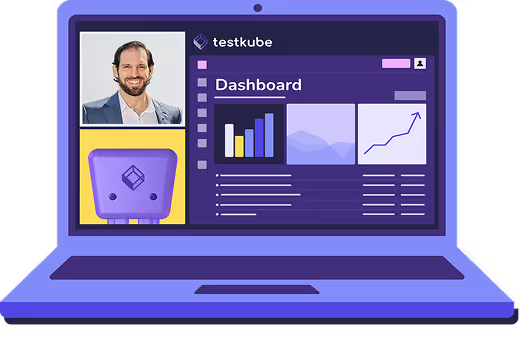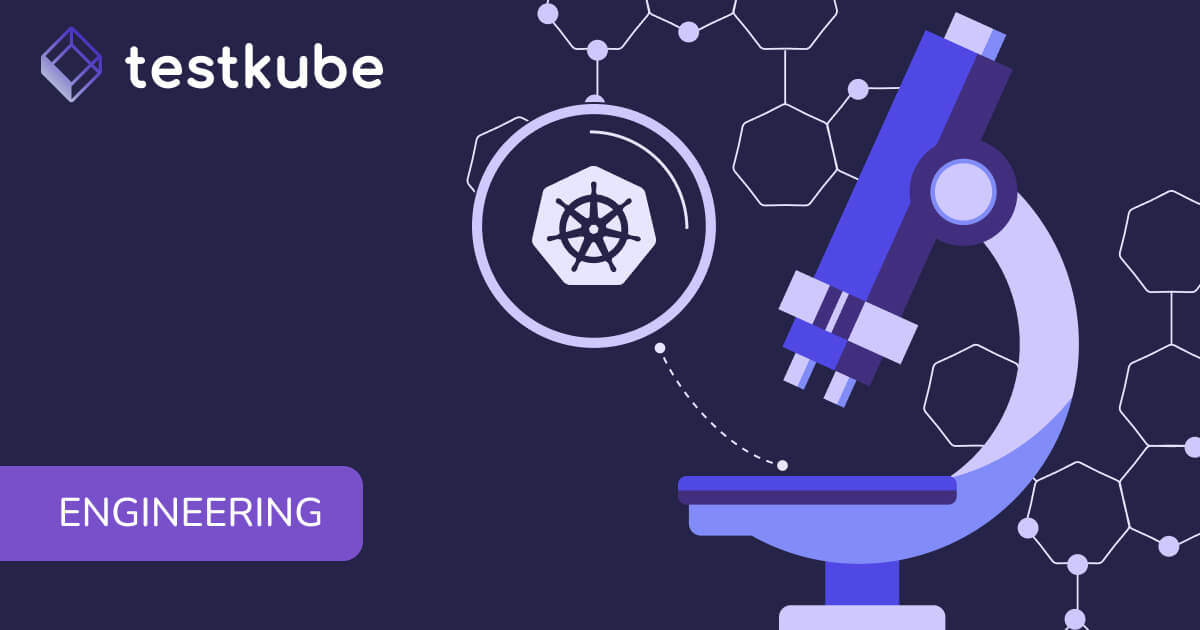

Table of Contents
Try Testkube instantly in our sandbox. No setup needed.
Try Testkube instantly in our sandbox. No setup needed.




Table of Contents
Executive Summary
Over the years, we have traded the predictability of monolithic systems for the flexibility of microservices to create scalable and resilient systems in theory but far more complex in practice. In Kubernetes, your applications are constantly orchestrated, rescheduled, and scaled across a dynamic infrastructure.
Traditional testing practices weren’t equipped to deal with an unpredictable and dynamic nature. Your apps may pass all the unit tests, integration tests, and even the load tests, yet will fail when deployed to a Kubernetes cluster due to a routine pod restart or a node drain. These are edge cases; they are the everyday reality of cloud native systems for which our apps are built.
In this post, we'll explore reliability testing in cloud-native contexts, examine common failure scenarios, review practical testing strategies and tools, and show how to integrate reliability testing into your development workflows.
What Is Reliability Testing in Kubernetes?
Reliability testing ensures your systems function correctly and consistently under real-world conditions—failure scenarios, unexpected loads, etc. Unlike functional testing, which focuses on the functionality of your app, reliability testing asks, “Does this system behave as expected when things go wrong?”
To understand this better, consider an e-commerce website, especially the checkout service during a Black Friday sale.
- Availability measures whether the checkout service responds (uptime)
- Resilience focused on recovery speed - how fast can it recover from a database timeout?
- Reliability validates if the checkout services consistently handles payment errors, inventory updates and user sessions when individual components fail.
Reliability testing is a subset of the larger reliability engineering approach. While resiliency engineering focuses on building systems that gracefully handle failures, and observability provides the metrics and traces to better understand the issues, reliability testing validates that these capabilities actually work.
All three work together: Observability tools provide the data to measure impact during reliability tests, while resilience patterns like retry mechanisms and circuit breakers are what you’re actually testing.
When it comes to Kubernetes, reliability testing is more complex due to multiple moving parts. Reliability testing must account for all the dynamic scenarios that orchestration creates:
- Node failures and cluster scaling events
- Pod restarts and evictions due to resource constraints
- Network partitions between clusters or services
- ConfigMap and secret updates in production during live traffic
- Stateful workload resilience during storage failures
Effective reliability testing should align with your SLAs, SLOs, and error budgets and ensure that failures stay within the agreed-upon thresholds.
Challenges of Reliability Testing in Kubernetes
Kubernetes provides powerful orchestration capability, but not without the added complexities of its dynamic nature and components that traditional testing practices were not designed to handle. Let us look at some of the challenges of reliability testing in Kubernetes.
- Ephemeral infrastructure and distributed services: Pods and nodes come and go dynamically, making it difficult to establish a consistent test baseline.
- Resource scheduling impacts: Pod eviction under memory pressure or during node maintenance can affect other dependent services in ways that are hard to simulate.
- Difficulty reproducing real-world failures: As Kubernetes involves multiple components and often involves time-dependent interactions, recreating the exact sequence of network disruption during a rolling update is nearly impossible.
- Observability gaps across clusters and services: Apps and services span multiple clusters, making distributed tracing and metric collection complex.
- Misconfigurations: Incorrect liveness probe timeouts or missing resource limits surface only under specific load conditions, creating reliability issues that standard testing won’t catch.
Common Reliability Testing Strategies in Kubernetes
Chaos Engineering
Chaos Engineering involves deliberately injecting controlled failures into your system to unearth weaknesses before they show up in production. In Kubernetes, this means testing how your apps respond to infrastructure failures.
Key scenarios include:
- Pod deletion during peak traffic to validate graceful shutdown
- Node drain with insufficient cluster capacity to validate resource constraints
- Network partition between services to test timeout behaviours
Load and Stress Testing
Load testing validates your app’s behaviour undrest expected traffic patterns, while stress testing helps identify breaking points in situations beyond normal capacity. In Kubernetes, this includes validating how your apps scale, how resource limits affect performance, and how clusters respond to resource pressure.
Key scenarios include:
- Horizontal Pod Autoscaler (HPA) behaviour during rapid traffic spikes
- Response time of the cluster autoscaler when nodes reach capacity
- Service mesh proxy overhead under high load conditions
Soak Testing
Soak testing runs your apps under normal conditions for extended periods to identify issues that only crop up over time. In Kubernetes, this is critical during memory leaks and gradual resource exhaustion.
Key scenarios include:
- Memory leaks in long-running pods leading to OOM errors
- TCP connection pool exhaustion over the days of operation
- Persistent volume storage growth patterns
Failover and Recovery Testing
This testing strategy validates how quickly your system can recover from component failures. Understanding this is critical for meeting SLOs in Kubernetes.
Key scenarios include:
- StatefulSet replica failure and data consistency during recovery
- Service discover failures during pod restarts
- Persistent volume attachment delays
Rolling Updates and Canary Rollouts
Testing deployment strategies is crucial to ensure that updates don’t introduce any reliability issues. This includes validating health checks, ensuring that resource requirements are met, and ensuring that rollback mechanisms work perfectly under load conditions.
Key scenarios include:
- Readiness probe failures preventing traffic from reaching the pod
- Resource contention when old and new pod versions run simultaneously
- Configuration drift between different deployment versions
Key Tools for Reliability Testing in Kubernetes
There are many reliability testing tools available, but choosing one depends on your specific use case, team expertise, and integration requirements. The Kubernetes ecosystem offers a variety of open source and enterprise solutions, ranging from simple chaos injections to comprehensive test orchestration platforms.
Integrating Reliability Testing into Your CI/CD Pipelines
Reliability testing should not be done in a silo but rather as part of your deployment pipeline to catch issues before they reach production. To understand this better, let’s continue with the e-commerce example we discussed earlier.
Running chaos experiments as part of pre-prod checks: Before promoting the checkout v2.0 to production, the pipeline deploys it to staging and automatically runs chaos experiments: killing payment pods, increasing load, etc. This helps validate whether the new version of the service can properly handle crashes, timeouts, etc. Without this, such failures would surface only during peak production traffic, where rollbacks are costly.
Automated rollback triggers based on reliability metrics: You can implement progressive delivery and employ canary deployment for your checkout service. Assume that 10% of your users have received the new version. Prometheus monitors the checkout completion rates, payment processing latency, and other metrics. When the completion rate drops below 99.5%, the pipeline automatically rolls back the new versions and preserves the existing logs. This ensures that 90% of users are still on stable versions while providing immediate diagnostic data about what went wrong.
Leveraging GitOps to deploy fault-injection manifests: Developers can store the checkout service’s reliability tests as Kubernetes manifests alongside the application code. So, whenever developers update the new checkout logic, tools like ArgoCD can automatically deploy corresponding chaos experiments to test the new version. This ensures that reliability tests evolve with application changes.
Test orchestration across ephemeral environments: Using tools like Testkube and vCluster, you can create an isolated test environment for each PR on the checkout service. This helps run comprehensive reliability tests on the whole e-commerce stack and destroys the environment. This provides dedicated resources for the tests and reduces test flakiness and interference between different feature branches.
Best Practices for Reliability Testing in Kubernetes
Reliability testing in Kubernetes isn’t just about running chaos experiments. It needs a strategic approach that mirrors your production environment and focuses on business-critical outcomes rather than only functional ones.
- Test in production-like environments: Use identical Kubernetes versions, node types, network configurations, and resource constraints as production. Staging environments with different configurations will not reveal the same failure patterns.
- Prioritize critical paths and services: First, focus on revenue-impacting services - payment processing, user authentication, checkout flows, etc. Testing every workflow is expensive and delays finding issues that actually matter for business continuity.
- Monitor impact with real-time metrics and traces: Deploy observability solutions alongside chaos experiments. You can’t distinguish between a false positive and an actual system breakdown without real-time visibility into error raters and request latencies during failures.
- Include graceful degradation and fallback logic: Test not only the failure scenarios but also how your application responds to such scenarios - does it serve cached data if the database pod is dead? Does it disable all non-essential features during high load? Reliability isn’t just about 100% uptime, but maintaining the core functionality.
- Team collaboration: Reliability testing requires domain expertise from different teams. QA teams understand the user workflows, SREs know the production failure patterns, and platform teams understand infrastructure constraints. Siloed testing misses critical integration points.
How Testkube Supports Reliability Testing in Kubernetes
Testkube provides Kubernetes native test orchestration capabilities that simplify reliability testing by treating tests as Kubernetes resources. This eliminates the need for and complexity of maintaining external testing infrastructure.
- Kubernetes Native: By abstracting away the complexities of working with Kubernetes and scaling automatically based on workload demands, Testkube takes full advantage of Kubernetes while helping teams focus on building their testing scenarios.
- CI/CD & GitOps Integration: Testkube effortlessly integrates with CI/CD platforms like Jenkins, GitLab CI, and Argo CD, allowing for automated infrastructure testing as part of the deployment process.
- Integration with Testing Tools: Testkube works with popular testing tools like k6, Curl, and Postman, allowing you to combine different approaches for comprehensive infrastructure validation.
- Single pane of Glass: All test results, logs, and artifacts are in one place, no matter how tests are triggered, and they provide streamlined test troubleshooting and powerful, holistic reporting.
- Post-failure test execution: Automatically trigger functional and API tests after chaos experiments complete. For example, inject payment service failures, then immediately run checkout workflow tests to validate graceful degradation.
Conclusion
Kubernetes has changed the way we deploy our applications and the way they fail, making infrastructure events part of your app’s behavior. Traditional testing approaches assumed stable infrastructure and weren’t built for the dynamic nature of Kubernetes.
Reliability testing isn’t a luxury; it’s a necessity - especially for mature teams. If your team is running critical workloads on Kubernetes, you need reliability testing. If you build reliability testing into your deployment workflow, you can only test the compounding failures that bring down production systems.
Start small, monitor the impact, and gradually expand to cover more failure scenarios. The cost of implementing reliability testing is always lower than the cost of production outages. Make reliability testing a continuous, automated process, not a one-time event.
FAQs


About Testkube
Testkube is a cloud-native continuous testing platform for Kubernetes. It runs tests directly in your clusters, works with any CI/CD system, and supports every testing tool your team uses. By removing CI/CD bottlenecks, Testkube helps teams ship faster with confidence.
Explore the sandbox to see Testkube in action.






